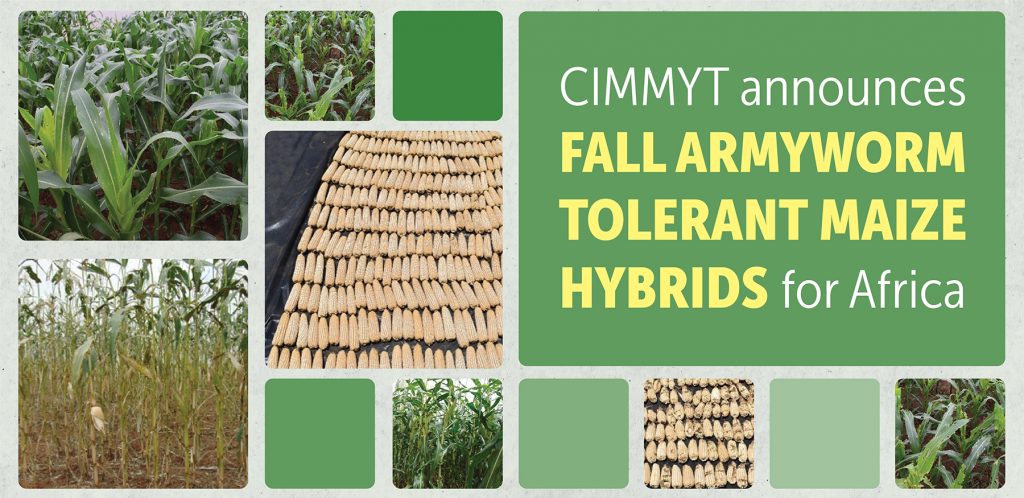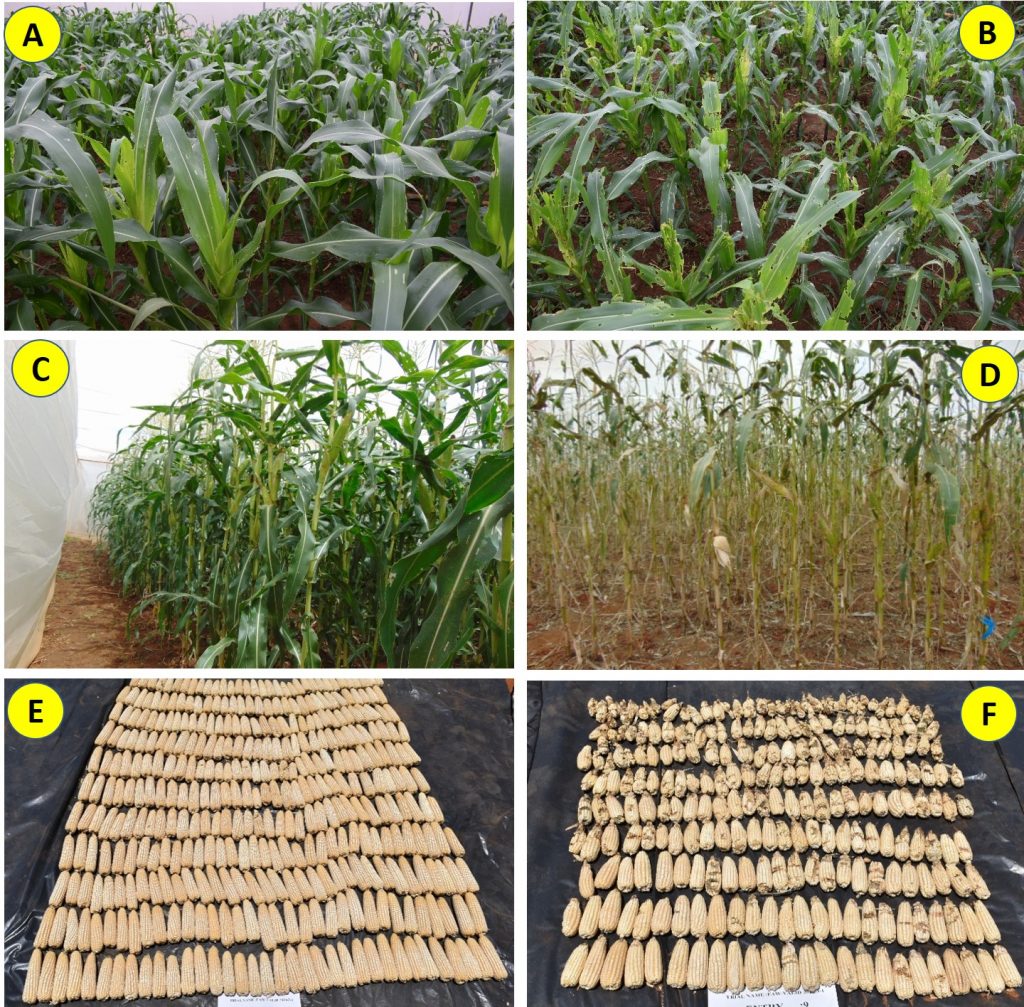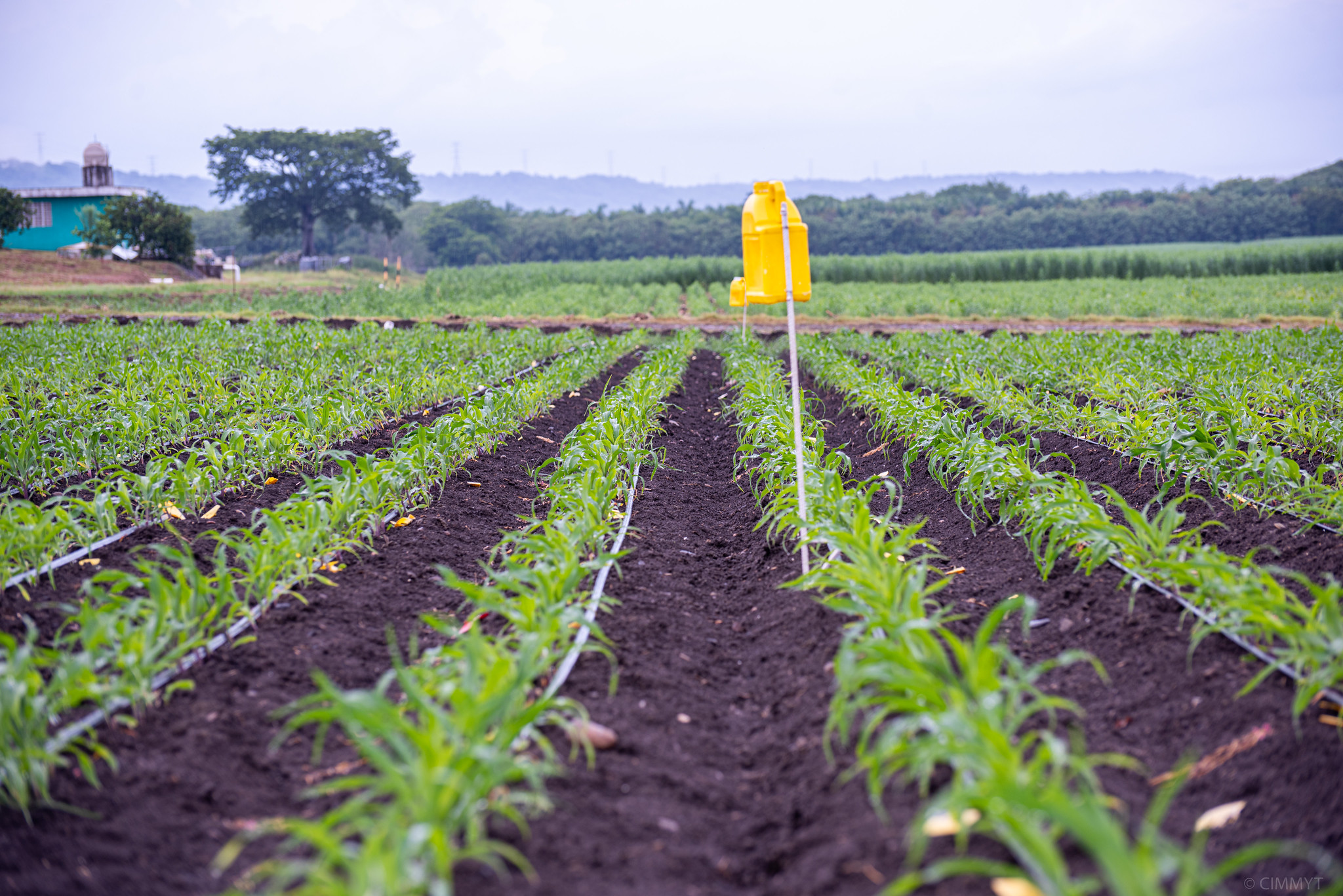
The International Maize and Wheat Improvement Center (CIMMYT) is pleased to announce the successful development of three CIMMYT-derived fall armyworm-tolerant elite maize hybrids for eastern and southern Africa.
Fall armyworm (Spodoptera frugiperda) emerged as a serious threat to maize production in Africa in 2016 before spreading to Asia in 2018. Host plant resistance is an important component of integrated pest management (IPM). By leveraging tropical insect-resistant maize germplasm developed in Mexico, coupled with elite stress-resilient maize germplasm developed in sub-Saharan Africa, CIMMYT worked intensively over the past three years to identify and validate sources of native genetic resistance to fall armyworm in Africa. This included screening over 3,500 hybrids in 2018 and 2019.
Based on the results of on-station screenhouse trials for fall armyworm tolerance (under artificial infestation) conducted at Kiboko during 2017-2019, CIMMYT researchers evaluated in 2020 a set of eight test hybrids (four early-maturing and four intermediate-maturing) ) against four widely used commercial hybrids (two early- and two intermediate-maturing) as checks. The trials conducted were:
- “No choice” trial under fall armyworm artificial infestation in screenhouses in Kiboko, Kenya: Each entry was planted in 40 rows in a separate screenhouse compartment (“no-choice”), and each plant infested with seven fall armyworm neonates 14 days after planting. Foliar damage was assessed 7, 14 and 21 days after infestation. Ear damage and percent ear damage were also recorded, in addition to grain yield and other agronomic parameters.
- On-station trials in eastern Africa: The trials, including the eight test entries and four commercial checks, were conducted at six locations in Kenya during the maize cropping season in 2020. Entries were evaluated for their performance under managed drought stress, managed low nitrogen stress, and under artificial inoculation for Turcicum leaf blight (TLB) and Gray leaf spot (GLS) diseases. The three-way cross CIMMYT test hybrids and their parents were also characterized on-station for their seed producibility, including maximum flowering time difference between parents, and single-cross female parent seed yield.
The eight test entries with fall armyworm tolerance were also included in the regional on-station trials (comprising a total of 58 entries) evaluated at 28 locations in Kenya and Tanzania. The purpose of these regional trials was to collect data on agronomic performance.
- On-farm trials in Kenya: The eight test hybrids and four commercial checks were evaluated under farmers’ management conditions (without any insecticide spray) at 16 on-farm sites in Kenya. Each entry was planted in 20-row plots, and data was recorded on natural fall armyworm infestation. Foliar damage was assessed 7, 14, 21, 28 and 35 days after germination together with insect incidence. Ear damage and percent ear damage were also recorded, besides grain yield and other agronomic parameters.

Summary of the data
- “No-choice” trials in screenhouses at Kiboko: Significant differences were observed between the three selected fall armyworm tolerant hybrids (FAWTH2001-2003) and the commercial benchmark hybrid checks at the vegetative and grain filling stages and at harvest (Figure 1). In the fall armyworm artificial infestation trial, the three selected FAWTH hybrids yielded 7.05 to 8.59 t/ha while the commercial checks yielded 0.94-1.03 t/ha (Table 1).
- On-station trials: No significant differences were observed between the three selected FAWTH hybrids and the commercial checks for grain yield and other important traits evaluated under optimum, managed drought stress, low nitrogen stress, TLB and GLS diseases (Table 1). The three FAWTH hybrids recorded excellent synchrony in terms of flowering between the female and male parents, and very good female parent seed yield (Table 1).
- On-farm trials: There were significant differences in terms of foliar damage ratings between the FAWTH hybrids and the commercial checks. For ear damage, the differences were not statistically significant. The grain yields did not vary significantly under natural infestation in the on-farm trials because of the very low incidence of fall armyworm at most sites.
Native genetic resistance to fall armyworm in maize is partial, though quite significant in terms of yield protection under severe fall armyworm infestation, as compared to the susceptible commercial checks. Sustainable control of fall armyworm is best achieved when farmers use host plant resistance in combination with other components of integrated pest management, including good agronomic management, biological control and environmentally safer pesticides.
Next Steps
Together with national agricultural research system (NARS) partners, CIMMYT will nominate these FAWTH hybrids for varietal release in target countries in sub-Saharan Africa, especially in eastern and southern Africa. After national performance trials (NPTs) and varietal release and registration, the hybrids will be sublicensed to seed company partners on a non-exclusive, royalty-free basis for accelerated seed scaling and deployment for the benefit of farming communities.
Acknowledgements
This work was implemented with funding support from the CGIAR Research Program on Maize (MAIZE), the U.S. Agency for International Development (USAID) Feed the Future initiative, and the Bill & Melinda Gates Foundation. MAIZE receives Windows 1&2 funding support from the World Bank and the Governments of Australia, Belgium, Canada, China, France, India, Japan, Korea, Mexico, Netherlands, New Zealand, Norway, Sweden, Switzerland, UK and USA. The support extended by the Kenya Agriculture & Livestock Research Organization (KALRO) for implementation of this work through the fall armyworm mass rearing facility at Katumani and the maize research facilities managed by CIMMYT at Kiboko is gratefully acknowledged.
For further information, please contact:
B.M. Prasanna, Director of the Global Maize Program, CIMMYT and the CGIAR Research Program on Maize. b.m.prasanna@cgiar.org


 Capacity development
Capacity development 